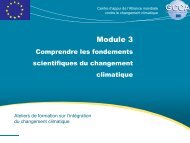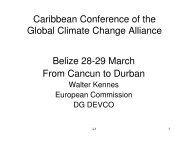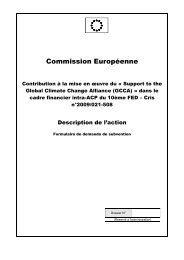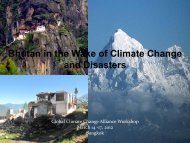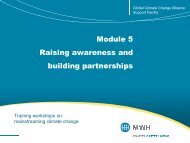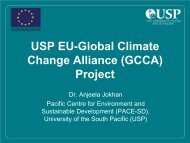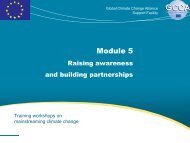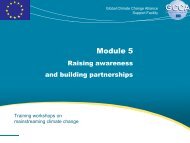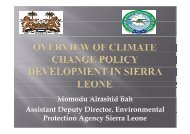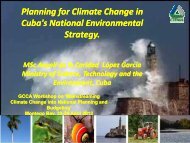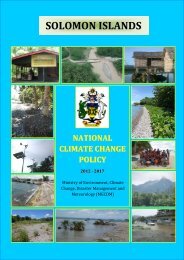Rwanda Green Growth Strategy 18nov11 - Global Climate Change ...
Rwanda Green Growth Strategy 18nov11 - Global Climate Change ...
Rwanda Green Growth Strategy 18nov11 - Global Climate Change ...
Create successful ePaper yourself
Turn your PDF publications into a flip-book with our unique Google optimized e-Paper software.
Chapter 5National Fund for <strong>Climate</strong> and the Environment - FONERWAFONERWA was provided for in organic law 04/2005 to support REMA. It is now being establishedwith a broader mandate which covers climate and environment, including water, forestry, mining and quarryresources. According to the draft bill, the Management Committee of FONERWA will consist of PermanentSecretaries from MINIRENA, MINICOM, MINAGRI, MINALOC, MININFRA, and MIDIMAR; the DirectorGeneral from REMA; the Director General of the <strong>Rwanda</strong> Natural Resource Board; a representative of thePrivate Sector Federation (PSF); and four representatives of non-governmental organisations operating inthe areas of environment, water and forests protection and climate change adaptation and mitigation.FONERWA will begin with a simple design, with a Technical Committee housed in REMA, charged with theday-to-day management of the fund, capitalising the fund through environmental taxes and grants fromdevelopment partners, mobilising other sources of climate finance, and assisting in carbon accounting.Once established, the Technical Committee will be transferred to MINECOFIN where it can employ morecomplex financing mechanisms, and eventually access concessional debt financing to increase capital forviable low carbon investments. FONERWA will seek to employ a wide-range of public financingmechanisms, such as performance-based grants, loan guarantees, lines of credit, and public venturecapital to create an attractive investment environment for low-carbon activities.The priorities of the Institutional Pillar are:Priority 1. Establish new institutional arrangements, namely a Technical CoordinatingCommittee and a Centre for <strong>Climate</strong> Knowledge for DevelopmentPriority 2. Mainstream the <strong>Strategy</strong> into Vision 2020, EDPRS II, and Sector policies andstrategiesPriority 3. Mainstream the <strong>Strategy</strong> into sub-national institutional arrangements, and theIntegrated Development Programme, and pilot ‘climate smart’ villagesPriority 4. Develop Local Adaptation Plans of Action and Locally Appropriate MitigationActions, and mainstream the <strong>Strategy</strong> into District Development PlansPriority 5. Develop a common UNFCCC negotiating position with the EAC and LDC and AfricagroupsKey responsible stakeholders are: MINIRENA, RNRA, MINALOC, RMS, RNRA, REMAPillar 2: FinanceOne of the two biggest challenges <strong>Rwanda</strong> faces in implementing this <strong>Strategy</strong> is access to finance.<strong>Rwanda</strong> has yet to fully exploit the international climate financing opportunities that exist, as shown in figure15 which lists the climate funds currently, or soon to be, available to each sector. These are detailed in the<strong>Rwanda</strong> <strong>Climate</strong> Funds Toolkit in Appendix H which lists all available funds per sector and details the size,mandate, types of finance, project types, decision-making structure, application procedure, status in<strong>Rwanda</strong> including local contacts, project examples, links and the key contact for each fund. This toolkitneeds to be updated on a regular basis as climate finance opportunities will increase substantially over thenext decade.30Government of <strong>Rwanda</strong>




